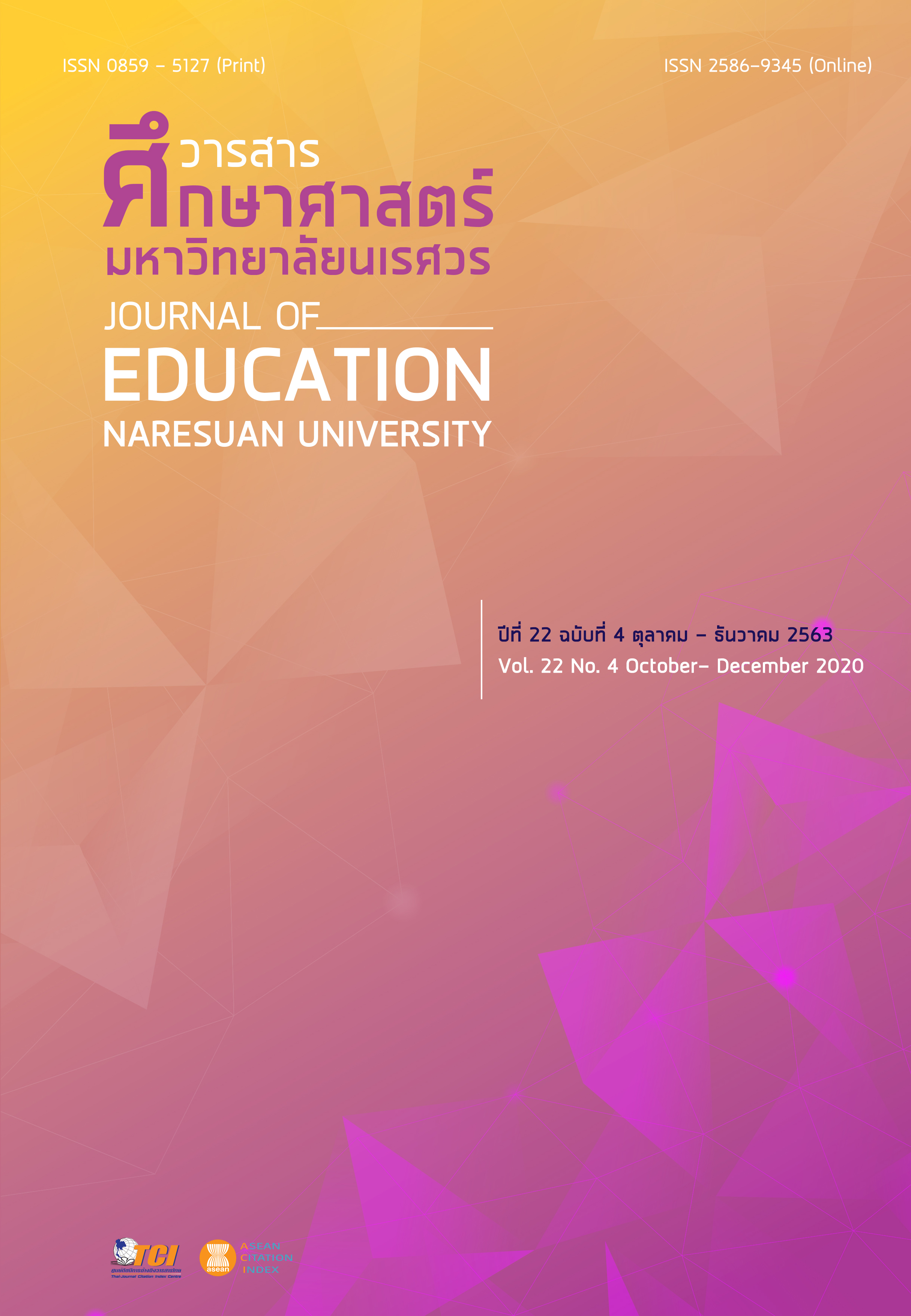THE RHETORIC OF SOCIAL INCLUSION THROUGH PHYSICAL EDUCATION, SPORT AND PHYSICAL ACTIVITY วาทกรรมการนับรวมทางสังคมผ่านพลศึกษา กีฬาและกิจกรรมทางกาย
Main Article Content
Abstract
The issue of social inclusion first appeared in France in 1974. By using it as a way to solve the inequality of the benefits from the social security system that prevents certain groups of people from benefiting. Later, in the year 1980, this concept extended to those who lost opportunity from illness, weakness, old people, children who have been abused as well as the disabled. Nowadays, the concept of exclusion from European countries society (such as France, England, Scotland, New Zealand, Romania) have been used to set policies for equality to count people in the nation together. Due to the misery, suffering and lack of opportunities, this academic article presents the development of social inclusion concept by accessing sports and physical education from classical knowledge. It discusses in many benefits of sports, physical education activities, and empirical research in the last 15 years before 2020 that shows the arguments and deficiencies in some aspects of sports and physical education activities in schools that have an impact on social inclusion.
Article Details
The owner of the article does not copy or violate any of its copyright. If any copyright infringement occurs or prosecution, in any case, the Editorial Board is not involved in all the rights to the owner of the article to be performed.
References
Azzarito, L., Mcdonald, D., Dagkas, S., & Fisettle, J. (2016). Revitalizing the PE Social-Justice Agenda in the Global Era: Where do we go from here? Quest, 69(2), 205-219.
Azzarito, L., & Solomon, M. (2005). A reconceptualization of physical education: The intersection of gender/race/social class. Sport Education and Society, 10(1), 26-47.
Bailey, R. (2005). Evaluating the relationship between physical education, sport and social inclusion. Educational Review, 57(1), 71-90.
Bailey, R. (2006). Physical education and sport in school: A review of benefits and outcomes. Journal of School Health, 76(8), 397-401.
Bailey, R. (2016). Sport, physical activity and educational achievement-towards an explanatory model. Sport in Society, 20(7), 768-788.
Bailey, R., Hillman, C., Arent, S., & Petipas, A. (2013). Physical activity: An underestimated investment in human capital? Journal of Physical Activity and Health, 10, 289-308.
Bailey, R., Hillman, C., Arent, S., & Petipas, A. (2012). Physical activity as an investment in personal and social change: The human capital model? Journal of Physical Activity and Health, 9(8), 1053-1055.
Benn, T., Dagkas, S., & Jawad, H. (2011). Embodied faith: Islam, religious freedom, and educational practices in physical education. Sport, Education and Society, 16(1), 17-34.
Bramham, P. (2003). Boys, masculinities, and PE. Sport, Education and Society, 8(1), 57-71.
Burdsey, D. (2007). British Asians and football: Culture, identity and exclusion. London: Routledge.
Burrows, L. (2009). Pedagogizing families through obesity discourse. In J. Wright and V. Harwood (Eds), Biopolitics and the ‘Obesity Epidemic’ (pp. 127-140). London: Routledge.
Burrows, L., & Mccormack, J. (2012). Teachers’ talk about health, self and student’ body. Discourse, 33(5), 729-744.
Coackley. J. (2011). Youth sports: What counts as ‘positive development. Journal of Sporty and Social Issues, 35(3), 306-324.
Collins, F. M., & Kay, T. (2003). Sport and social exclusion. London: Routledge.
Curry, W., Dagkas, S., & Wilson, M. (2016). Levels and patterns of physical activity and sedentary time among superdiverse adolescents in East London: A cross-sectional study. Ethnicity and Health, 22(3), 242-256.
Dagkas, S. (2014). Who has health problems? class, racialisation and health. In K. Fitzpatrick and Tinning (Eds), Health Education: A New Body Fascism (pp. 75-93). New York: Routledge.
Dagkas, S. (2016). Problematizing social justice in health pedagogy and youth sport: Intersectionality of race, ethnicity, and class. Research Quarterly in Exercise and Sport, 87(3), 221-229.
Dagkas, S., & Armour, K. (2012). Inclusion and exclusion through youth sport. London: Routledge.
Dagkas, S., & Benn, T. (2012). The embodiment of religious culture and exclusionary practices in youth sport. In S. Dagkas and K. Armour (Eds), Inclusion and Exclusion through Youth Sport (pp. 113-124). London: Routledge.
Dagkas, S., & Curry, W. (2016). Language and sport, physical activity, and health among superdiverse groups. In A. Creese and A. Blackledge (Eds), Handbook on Language and Superdiversity. London: Routledge.
Dagkas, S., & Iisahunter, R. (2015). ‘Racialised’ pedagogic practices influencing young Muslims’ physical culture. Physical Education and Sport Pedagogy, 20(5), 547-558.
Dagkas, S., & Stathi, A. (2007). Exploring social and environmental factors affecting adolescent’s participation in physical activity. European Physical Education Review, 13(3), 369-384.
Fitzpatrick, K. (2011). Obesity, Health and physical education: A Bourdieu and perspective. Policy Futures in Education, 9(3), 353-366.
Flintoff, A., Fitzgerald, H., & Scraton, S. (2008). The challenges of intersectionality: Researching difference in physical education. International Studies in Sociology of Education, 18(2), 73-85.
Hamzeh, M. (2015). Jordanian national football Muslim at players: Interrupting Islamophobia in FIFA’s Hijab Ban. Physical Education and Sport Pedagogy, 20(5), 517-531.
Hylton, K. (2015). ‘Race’ talk! tensions and contradictions in sports and PE. Physical Education and Sport Pedagogy, 20(5), 503-516.
Iisahunter, R. (2013). What did i do-see-learn at the beach? Surfing festival as a cultural pedagogical sight/site. In L. Azzarito and D. Kirk (Eds), Physical Culture, Pedagogies and Visual Methods (pp. 144-161). New York: Routledge.
Pluim. C., & Grad, M. (2016). Parents as pawn in fitness gram’s was on obesity. In S. Dagkas and L. Burrows (Eds), Families, Young People, Physical Activity and Health: Critical Perspectives (pp. 71-83). Abingdon: Routledge.
Quarmby, T., & Dagkas, S. (2013). Locating the place and meaning of physical activity in the lives of young people from low income, lone parent families. Physical Education and Sport Pedagogy, 18(5), 459-474.


